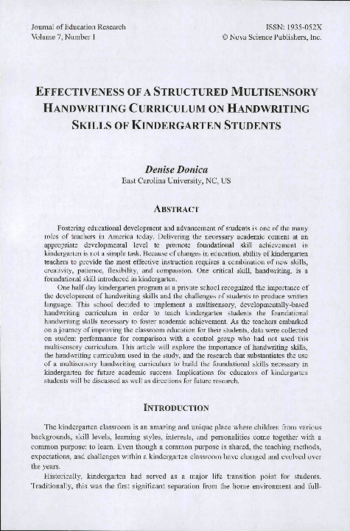During my Level II Fieldwork at Clark County School District (CCSD) I used both the cognitive and multisensory approach with a student who had Autism. I used Handwriting Without Tears (HWT) with the student and used other multisensory activities such as a whiteboard with chalk, rice, Play Doh, and used lotion to write letters on the table.
The mulitsensory approach has been found to be effective when used cojointly with the cognitive approach (Donica, 2013). The HWT teaching materials are a great example in which both approaches are used concurrently with improvements in handwriting outcomes (Donica, 2013). The outcomes of this study concluded that those who received instruction in HWT scored significantly higher scores on the Test of Handwriting Skill-Revised (THS-R) for one full year of handwriting instruction. Curriculum was implemented for 15 minutes within the classroom. Some of the multisensory activities they used included rolling Play Doh, using a chalk slate, and arranging wooden pieces to form capital letters. I thought that this child needed multiple sensory inputs to help execute motor movement. I used the cognitive approach by using handwriting without tears workbook; I thought he really benefitted from the multisensory input. His facial expressions indicated that this was a positive experience—he gave me several big smiles! Handwriting became a preferred activity for this boy.
References
- Donica, D. (2013). Effectiveness of structured multisensory handwriting curriculum on handwriting skills of kindergarten students. Journal of Education Research, 1(7), 1-14. Retrieved from http://web.b.ebscohost.com
